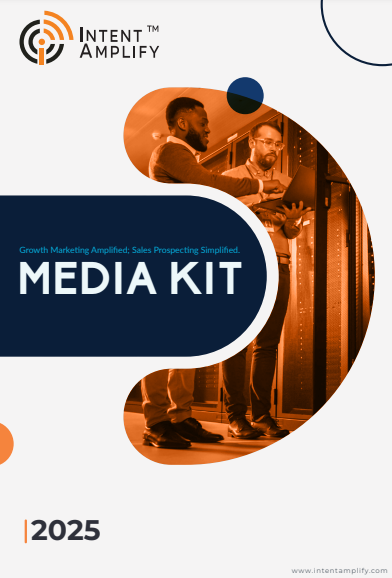
Why Account Tiering Is Important to Smarter B2B Marketing
- Last updated on: October 6, 2025
Applying account tiering to ABM changes the way that B2B marketers engage with their campaigns. Rather than a blanket approach, tiering allows for pinpoint targeting. Here, each account is treated in relation to its value.
For Tier 1 accounts, this might translate into personalized messaging, executive touch, and bespoke campaigns. It is based on particular areas of pain. Tier 2 accounts can expect segmented campaigns based on firmographic information and engagement levels. While Tier 3 accounts are cultivated via automated flows.
There are real advantages to this strategic resource allocation. Increased ROI from high-value accounts comes first. Also, there is better sales and marketing alignment. This minimizes wasted effort. And finally, Faster pipeline velocity, since attention is given to accounts likely to convert.
Key Criteria for Effective Account Tiering
Not all accounts are the same. Successful account tiering to support ABM (Account-Based Marketing) must have clear criteria. This criterion is useful to assess potential value and fit with company objectives. Some of the key factors are:
Revenue Potential: Prioritize the highest revenue potential accounts.
Strategic Fit: Accounts fitting your ideal customer profile and long-term business objectives.
Engagement Signals: Previous engagement, site activity, content downloads, and social engagement represent the probability of conversion.
Buying Intent: Behavioral and organizational data that indicate where an account is within the buying process.
The most effective account tiering approaches balance data analysis with human interpretation. Sales and marketing professionals need to confirm and adapt tiers. These tiers are in line with live context and changing priorities. While analytics platforms and AI can spot potential accounts. Applications such as CRM systems, ABM platforms, and AI-powered scoring engines facilitate this process. Eventually, allowing marketers to dynamically reprioritize account tiers while keeping pace with business objectives. Through the use of these criteria, organizations can develop a tiering system that is actionable and agile. With marketing and sales teams prioritizing the accounts that really count.
Best Practices for Executing Account Tiering
For best results from account tiering for ABM, organizations need to get past easy classification. Also, embrace a disciplined, data-driven methodology that synchronizes marketing, sales, and operations. Here’s how to do it right:
Define Clear, Measurable Tiers
Develop clear-cut criteria for each level. This includes revenue potential, strategic value, purchase intent, and purchase history. Where practical, assign quantitative levels (e.g., Tier 1: $5M+ potential, Tier 2: $1–5M, Tier 3: <$1M) to avoid interpretation. Incorporate qualitative elements. These can be strategically fit with company objectives or premium-value industry segments to detect long-term potential.
Work Closely Across Sales, Marketing, and Customer Success
Make sure to educate all teams on tier definitions and corresponding roles in running campaigns. Establish collaborative planning sessions to allocate account owners. Craft engagement plans and determine touchpoints. Utilize tiering as a shared language to decrease friction and enhance accountability between departments.
Customize Engagement Strategies by Tier
Tier 1 accounts must be treated with extremely personalized campaigns. These would be like executive roundtables, behavior-triggered webinars, custom content, and individual account managers. Semi-personalized content and campaigns based on explicit based on user behavior are enough for Tier 2 accounts. It maintains a balance between efficiency and relevance. Automated workflows, email sequences, and also scalable content campaigns can suffice for nurturing Tier 3 accounts. Although we can still track for tier upgrades.
Implement Dynamic Tier Reviews
Periodically review tier classifications based on 3 things. Refreshed data, changing business priorities, and account participation levels. Utilize dashboards for visual representations of account performance. In addition to that, utilize it for rapid discovery of accounts that must advance or regress in priority. Include triggers for automated notices when a Tier 2 account expresses Tier 1 potential. (e.g., higher engagement, fresh budget indications).
Leverage Technology to Scale and Track
Combine ABM platforms, CRM systems, and AI-driven analytics. Together, these work to register in-time engagement signals. Apply predictive scoring to optimize tiers and predict account readiness. This works for reserved campaigns. Monitor performance metrics like pipeline velocity, opportunity generation, and also engagement depth to prove tier efficacy.
Construct Feedback Loops for Continuous Improvement
Perform post-campaign analysis to determine which tiering strategies delivered quantifiable impact. Collect feedback from marketing and sales teams to help optimize tiering logic and engagement strategies. Leverage insights gradually to enhance targeting accuracy and campaign ROI.
Measuring the Impact of Account Tiering
The success of ABM account tiering is measured to some extent. This enhances account engagement, conversion, and revenue performance. Organizations need to monitor several metrics. These metrics should align with efficiency as well as effectiveness in their ABM initiatives. To properly measure impact.
Pipeline Velocity
Pipeline velocity quantifies the rate at which accounts move through the sales pipeline from engagement to close. With tiering of accounts for ABM, Tier 1 accounts, which are the ones with the most revenue potential and strategic significance, ought to progress quickly in the pipeline thanks to highly specific and individualized contact. Comparing the average stage times within the funnel across tiers helps marketers spot bottlenecks for Tier 2 and Tier 3 accounts. Eventually, they can redistribute resources or change campaign strategies. The past evaluation of pipeline speed also allows companies to measure efficiency gains. Obtained by prioritized account tiering.
Conversion Rates
Conversion rates directly indicate how effective tiered account plans are. Tier 1 accounts tend to have higher conversion rates through funnel stages. When accounts are ranked and prioritized for targeting based on value potential. From marketing-qualified lead (MQL) to sales-qualified lead (SQL), and from SQL to opportunity. Besides that, a chance to win. Monitoring these conversion metrics by tier enables organizations to determine if their efforts at engagement are yielding anticipated outcomes. Further, monitoring conversion behavior informs marketers which type of content or campaigns best resonate with each tier, and for ongoing improvement.
Engagement Depth
Engagement depth measures the quality of interactions with target accounts, not merely the number. For ABM account tiering, engagement depth reflects that campaigns are successfully targeting decision-makers and impacting their buying process. The metrics for evaluating engagement depth comprise executive meetings, attendance at strategic workshops or webinars, content downloads like whitepapers or case studies, and engagement on multiple channels, including email, social media, and live events. Coupling these signals of engagement with tier assignments guarantees that Tier 1 high-investment campaigns are driving significant interactions, confirming the necessity of these accounts to be prioritized.
Marketing ROI
ROI quantifies the return on marketing investment in comparison to the spend. Within a tiered ABM strategy, high-value accounts should yield unevenly higher returns as a result of being prioritized in Tier 1 accounts. ROI per tier can be calculated by comparing revenue achieved against spend on marketing, measuring cost-per-opportunity, and examining cost-per-acquisition. With the measurement of these metrics, organizations can verify that targeted resources have Measurable ROI. Tiered analysis also brings to light prospects for maximizing spend on lower-priority accounts so that the entire ABM program is optimized to the fullest extent.
A/B Testing Within Tiers
A/B testing allows organizations to optimize campaign strategies and discern best practices per account type. For example, Tier 1 accounts can be tested with executive roundtable invitations vs. personalized webinars to see which method produces more engagement and pipeline opportunities. Tier 2 accounts can be tested with semi-personalized emails vs. larger-scale content campaigns to find the right combination of personalization and scale. These findings guide both short-term campaign optimization and long-term ABM strategy optimization so that marketing strategies stay sharp and data-driven.
Ongoing Monitoring and Toning
Effective ABM programs monitor key performance indicators on an ongoing basis and fine-tune strategies as per real-time results. Ongoing examination of pipeline velocity, conversion rates, engagement depth, and ROI by tier allows organizations to dynamically tune tier assignments, engagement strategy, and resource deployment.
For instance, one cybersecurity SaaS company learned that targeted Tier 1 campaigns produced 50% more qualified leads per account than one-size-fits-all campaigns. Tracking these results enabled the business to double down on top-performing strategies, refine Tier 2 campaigns for improved engagement, and ensure marketing budgets were allocated effectively. Continuous review ensures account tiering for ABM continues to be effective, with maximum effect and return on investment.
Conclusion
Accuracy is everything in B2B marketing. ABM account tiering is an informed strategy that enables organizations to target the accounts that provide the most potential value, align resource allocation, and deliver measurable outcomes. Through marrying data-driven intelligence with human discretion, marketers can create tailored campaigns, synchronize sales and marketing activity, and enjoy greater ROI. For businesses that want to shore up ABM efforts, account tiering is no longer an option. it is now a strategic building block for wiser, more effective, and ROI-driven B2B marketing. Begin classifying your accounts today to unleash wiser growth.
FAQs
1. How does account tiering differ from account segmentation?
Account segmentation classifies accounts according to broad characteristics like industry or size, whereas account tiering for ABM ranks accounts in terms of strategic importance, revenue potential, and likelihood of engagement, so that targeted marketing is maintained.
2. How frequently should account tiers be re-evaluated?
Account tiers must be evaluated quarterly or as business priorities change. This provides reassurance that the highest-priority accounts continue to receive the proper attention and resources.
3. Is it possible for AI solutions to automate the tiering of accounts for ABM?
Yes, AI-enabled ABM software and CRM platforms can use engagement, intent signals, and firmographics to suggest tiers, but they require human validation to consider strategic factors.
4. How does the ROI of tiered ABM strategies impact?
Tiered strategies enhance ROI by concentrating marketing spend on high-value accounts. Companies tend to achieve greater conversion levels and more in-depth interaction with Tier 1 accounts while minimizing spend with lower-tier accounts.
5. How are mid-tier accounts best treated?
Tier 2 accounts need to be provided with semi-personalized campaigns with a fine balance between automation and personalization. This helps engage without overexerting resources, yet still develops these accounts for higher-tier potential.



